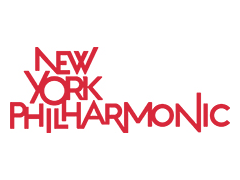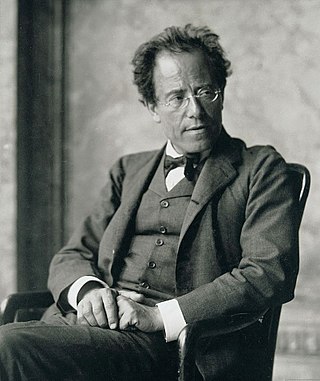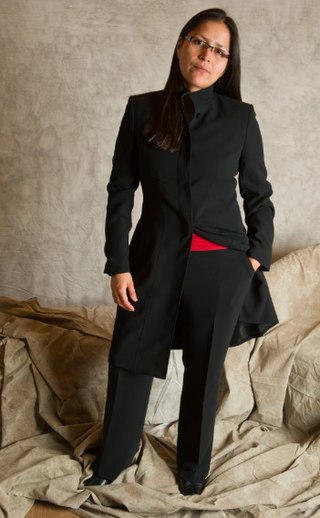
The New York Philharmonic is an American symphony orchestra based in New York City. Known officially as the Philharmonic-Symphony Society of New York, Inc., and globally known as the New York Philharmonic Orchestra (NYPO) or the New York Philharmonic-Symphony Orchestra, it is one of the leading American orchestras popularly called the "Big Five". The Philharmonic's home is David Geffen Hall, at New York's Lincoln Center for the Performing Arts.

Sir John Barbirolli was a British conductor and cellist. He is remembered above all as conductor of the Hallé Orchestra in Manchester, which he helped save from dissolution in 1943 and conducted for the rest of his life. Earlier in his career he was Arturo Toscanini's successor as music director of the New York Philharmonic, serving from 1936 to 1943. He was also chief conductor of the Houston Symphony from 1961 to 1967, and was a guest conductor of many other orchestras, including the BBC Symphony Orchestra, London Symphony Orchestra, the Philharmonia, the Berlin Philharmonic and the Vienna Philharmonic, with all of which he made recordings.
The Los Angeles Philharmonic is an American orchestra in Los Angeles, California. Colloquially referred to as the LA Phil, the orchestra has a regular season of concerts from October through June at the Walt Disney Concert Hall, and a summer season at the Hollywood Bowl from July through September. Gustavo Dudamel is the current music director, Esa-Pekka Salonen is conductor laureate, Zubin Mehta is conductor emeritus, and Susanna Mälkki is principal guest conductor. John Adams is the orchestra's current composer-in-residence.

The Symphony No. 9 by Gustav Mahler was written between 1908 and 1909, and was the last symphony that he completed. A typical performance takes about 75 to 90 minutes. A survey of conductors voted Mahler's Symphony No. 9 the fourth greatest symphony of all time in a ballot conducted by BBC Music Magazine in 2016. As in the case of his earlier Das Lied von der Erde, Mahler did not live to see his Symphony No. 9 performed.

Dame Janet Abbott Baker is an English mezzo-soprano best known as an opera, concert, and lieder singer.

Dimitri Mitropoulos was a Greek and American conductor, pianist, and composer.
Ralph Vaughan Williams dedicated his Symphony No. 4 in F minor to Arnold Bax.

Marin Alsop is an American conductor, the first woman to win the Koussevitzky Prize for conducting and the first conductor to be awarded a MacArthur Fellowship. She is music director laureate of the Baltimore Symphony Orchestra and chief conductor of the Vienna Radio Symphony Orchestra, the Ravinia Festival, and the Polish National Radio Symphony Orchestra. She was elected a Fellow of the American Academy of Arts and Sciences in 2008 and to the American Philosophical Society in 2020.

Simone Margaret Young AM is an Australian conductor and academic teacher. She is currently chief conductor of the Sydney Symphony Orchestra.

The Portland Youth Philharmonic (PYP) is the oldest youth orchestra in the United States, established in 1924 as the Portland Junior Symphony (PJS). Now based in Portland, Oregon, the orchestra's origin dates back to 1910, when music teacher Mary V. Dodge began playing music for local children in Burns, Oregon. Dodge purchased instruments for the children and organized the orchestra, which would become known as the Sagebrush Symphony Orchestra. After touring the state, including a performance at the Oregon State Fair in Salem, the orchestra disbanded in 1918 when Dodge moved to Portland. There, Dodge opened a violin school and became music director of the Irvington School Orchestra.

Nicolai Andreyevich Malko was a Russian-born American symphonic conductor.
Zoe Zeniodi is a conductor from Greece. She is currently the Artistic Director of El Sistema Greece. She is the first woman conductor to ever perform with Opera Southwest. She has been selected by the Dallas Opera for the residency of the Institute of Women Conductors, 2016. and a Taki Alsop Conducting Fellowship Mentee.
The New York Philharmonic concert of April 6, 1962, is widely regarded as one of the most controversial in the orchestra's history. Featuring a performance by Glenn Gould of the First Piano Concerto of Johannes Brahms, conducted by its music director, Leonard Bernstein, the concert became famous because of Bernstein's remarks from the podium prior to the concerto. Before Gould performed, Bernstein disassociated himself from the interpretation that was to come, describing it as "unorthodox" and departing from Brahms' original tempi. Gould, for his part, claimed publicly to be in favor of Bernstein's remarks.
Jiří Tancibudek AM was a Czech-born Australian oboist, conductor and teacher of great renown in his adopted country and elsewhere. His obituary in the Adelaide Review, titled "Prince of the oboe", said of his playing:
Mei-Ann Chen is a Taiwanese American conductor. She is currently music director of the Chicago Sinfonietta and conductor laureate of the Memphis Symphony Orchestra.
MaestraAntonia Joy Wilson is a professional conductor of international acclaim who has performed at Carnegie Hall and is a guest conductor worldwide. Antonia was the First Prize Winner of an International Classical Music Festival: Conducting Competition in Mexico. Antonia Joy Wilson is a music director of over eight American orchestras and she has extensive experience with classical, pops, choral, opera, gospel, dance, ballet, mime, jazz, country, storytelling, multimedia and multiple arts concert repertoire. Currently, as artistic director of Global Arts Center & Multimedia Symphony collaborating in XR Visual Worlds in development, Maestra Wilson thrives on entrepreneurial enterprises. Antonia has a vision of "Arts Access for All" and she is passionate about creating diversity through multimedia performances. Maestra Wilson conducted the international South American tour with Shen Yun Performing Arts based in New York. She made her debut conducting the Colorado Symphony Orchestra at the age of 21, making her the youngest woman to conduct a major American orchestra. She later went on to serve as a music director and conductor for seven American orchestras. In addition, she has performed a guest conductor role in Europe, Latin America, North America, and Asia. In 1996, she was the first prize winner at the International Classical Music Festival's conducting competition held in Mexico.
Carolyn Narelle Watson is an Australian conductor.
Sylvia Caduff is a Swiss orchestral conductor.

Jessica Bejarano is the founder and conductor of the San Francisco Philharmonic.










